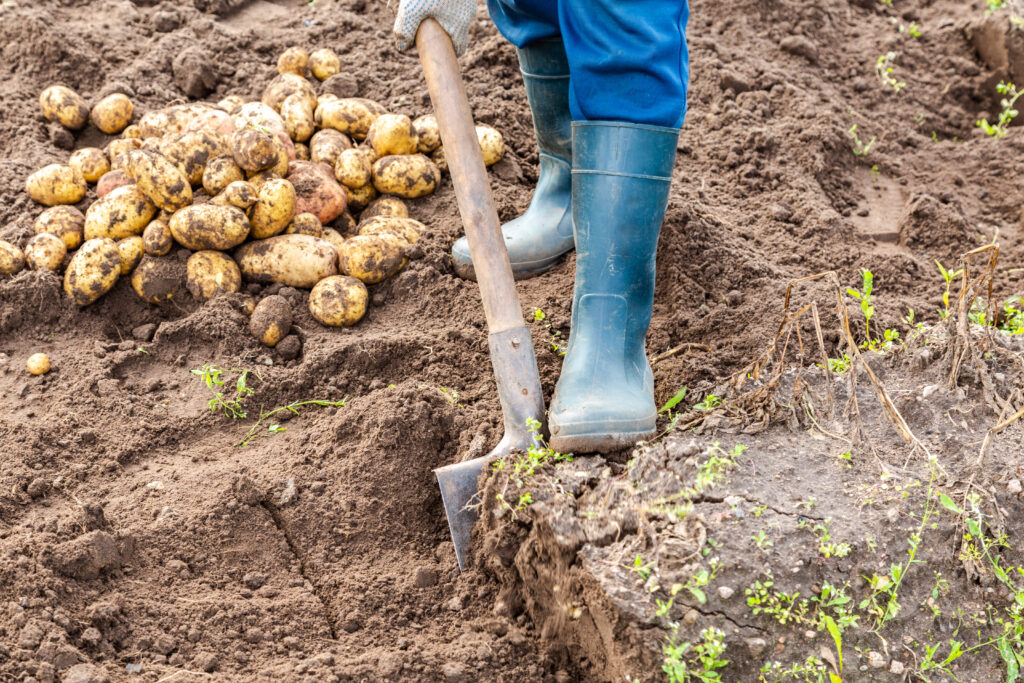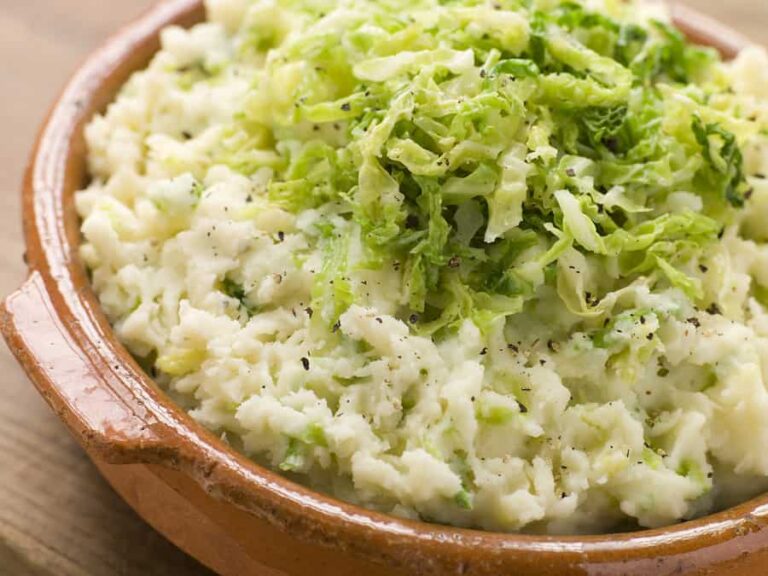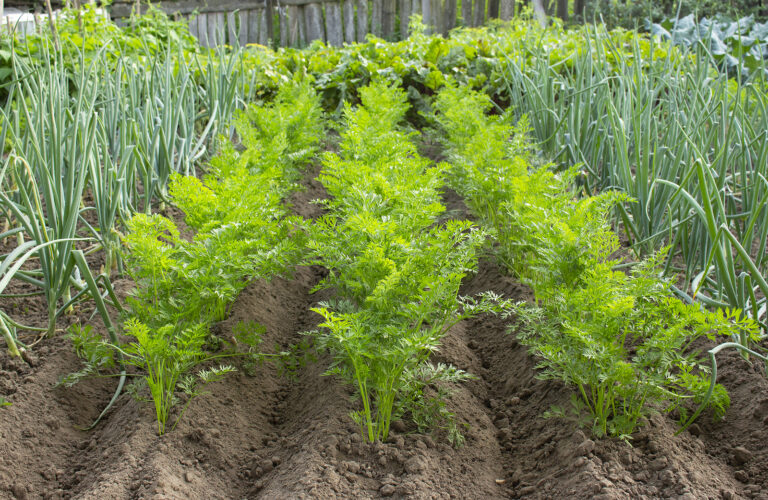Harvesting Potatoes: Signs of Maturity
Knowing when to harvest potatoes is crucial for maximizing yield and ensuring flavorful, well-stored tubers. Harvest too early, and the potatoes may be small; wait too long, and they may become damaged or susceptible to disease. After decades of gardening experience, I’ve developed a reliable method for identifying the signs of potato maturity.

1. Monitor Foliage
The most obvious sign that potatoes are ready is the plant’s foliage:
- New potatoes: Harvest when plants flower. Tubers are small, tender, and perfect for fresh eating.
- Mature potatoes: Wait until the leaves turn yellow and die back naturally. This signals the tubers have fully developed and the skin has thickened for storage.
2. Check the Soil
- Gently dig near a plant with a spade or your hands to examine a few tubers.
- The skin should be firm and not rub off easily. If the skin peels, the potato is not fully mature.
3. Weather Considerations
- Avoid harvesting when soil is overly wet; this can cause tubers to bruise or rot.
- In hot climates, allow the soil to dry slightly before digging.
4. Harvesting Technique
- Use a spade or fork to carefully lift the plant from the soil.
- Start from the edges to avoid damaging tubers.
- Brush off excess soil and let tubers cure in a cool, dark, ventilated area for 1–2 weeks before storage.
5. Storing Potatoes
- Store mature tubers in a dark, cool (40–50°F), and humid environment.
- Avoid storing new potatoes for long periods—they have thin skins and are best eaten fresh.
Gardener’s Tip:
In my Sonoma Valley garden, I harvest early potatoes at flowering for tender new spuds, and wait for foliage dieback for long-term storage potatoes. This staggered approach maximizes both taste and yield.
Potato Maturity and Harvest Guide
| Stage | Plant/Foliage Signs | Tuber Signs | Best Use |
|---|---|---|---|
| Early / New Potatoes | Plant begins flowering | Small, tender tubers; skin thin and soft | Fresh eating, boiling, roasting |
| Maturing | Leaves start yellowing; some dieback | Skin starting to firm; tubers growing in size | Roasting, mashing, everyday cooking |
| Fully Mature | Foliage mostly dead; stems dry | Firm, thick-skinned tubers | Long-term storage, winter use |
Harvest Tips:
- Gently dig from the edges of the plant to avoid bruising tubers.
- Cure mature potatoes in a cool, dark, ventilated area for 1–2 weeks before storage.
- New potatoes are best eaten immediately.
Potato Growing Hub
Start here: The Ultimate Potato Growing Guide: From Seed to Harvest
🥔 Varieties & Planting Prep
- Best Potato Varieties for Different Cooking Uses – Detailed profiles on varieties for boiling, baking, mashing, and roasting.
- Guide to Fingerling Potatoes: Growing, Cooking, and Varieties – Spotlight on fingerlings with care tips and culinary uses.
- How to Prepare and Cut Seed Potatoes for Planting – Step-by-step guide to maximize yield and reduce disease risk.
- Seed Potato Starting Tips – Ready your seed potatoes and plant
🌱 Planting & Early Growth
- How to Grow Potatoes in Containers: A Complete Guide – Soil, container size, watering, and harvesting tips for small-space growers.
- Grow Potatoes in Pots and Grow Bags: Seven Easy Steps
- 6 Easy Steps to Grow Organic Potatoes
- Companion Planting with Potatoes: What to Grow Together and Avoid – Maximize garden health and productivity through smart companion planting.
- Growing Potatoes in Mild Winter and Tropical Climates – Specific tips for successful potato cultivation in warmer regions.
- How to Identify Potato Growth Stages and Troubleshoot Problems – Recognize each growth phase and manage issues at every stage.
🌿 Care & Maintenance
- How and When to Hill Potatoes for Bigger Yields – Detailed instructions and timing for hilling to support tuber development.
- Watering Potatoes: Best Practices for Healthy Growth – Provide consistent moisture without risking rot or stress.
- Common Potato Pests, Disease, and Problems: Organic Solutions – Identification and natural control strategies for common pests.
- Crop Rotation Strategies for Potatoes to Prevent Soil-Borne Diseases – Plan your garden for long-term soil health and disease prevention.
🧺 Harvest & Storage
- Harvesting Potatoes: Signs of Maturity and Techniques to Avoid Damage – Know when potatoes are ready and how to harvest carefully.
- How to Harvest and Stoe Potatoes – Ideal temperature, humidity, and storage environments to keep potatoes fresh.
🍽️ Cooking & Kitchen Insights
- Testing Potato Starch Levels: Why It Matters and How to Do It – Understand starch content to choose the right potato for each dish.
- Seven Ways to Cook and Serve Potatoes – Easy ways to serve your potato harvest.
- How to Cook New Potatoes with No Recipe – Here’s how to get those little spuds on the table fast.







